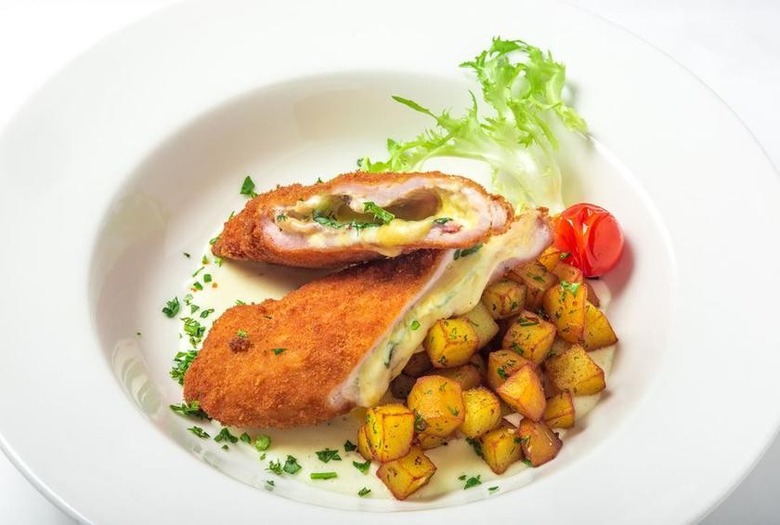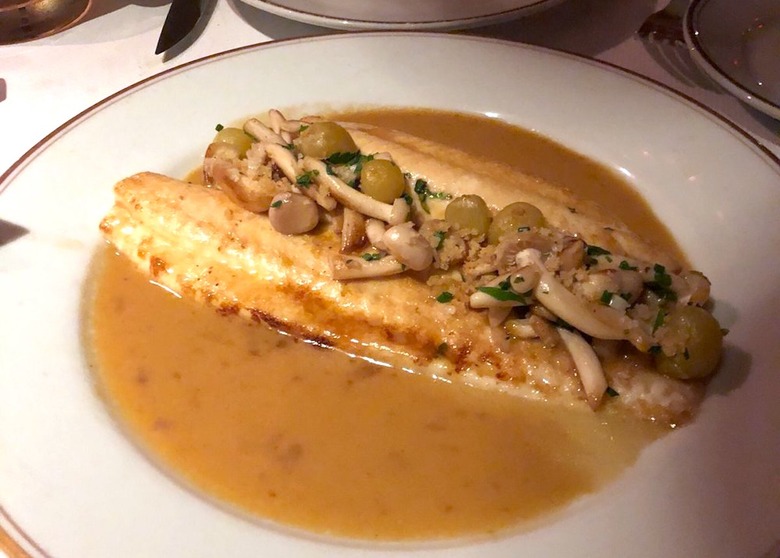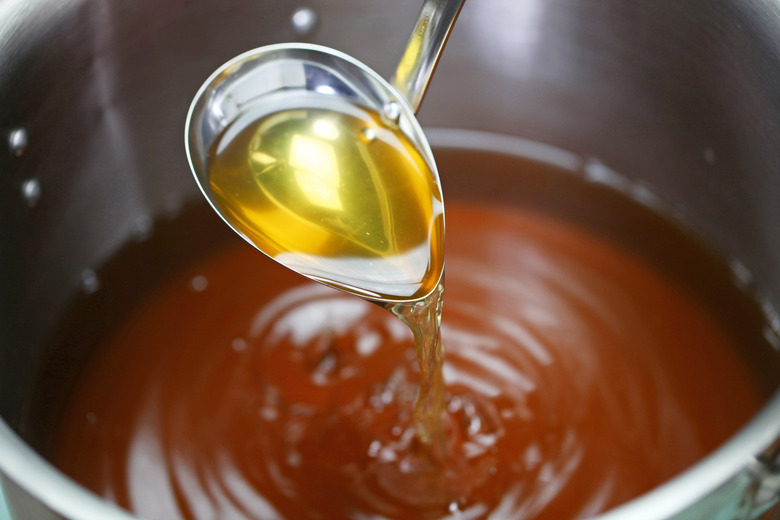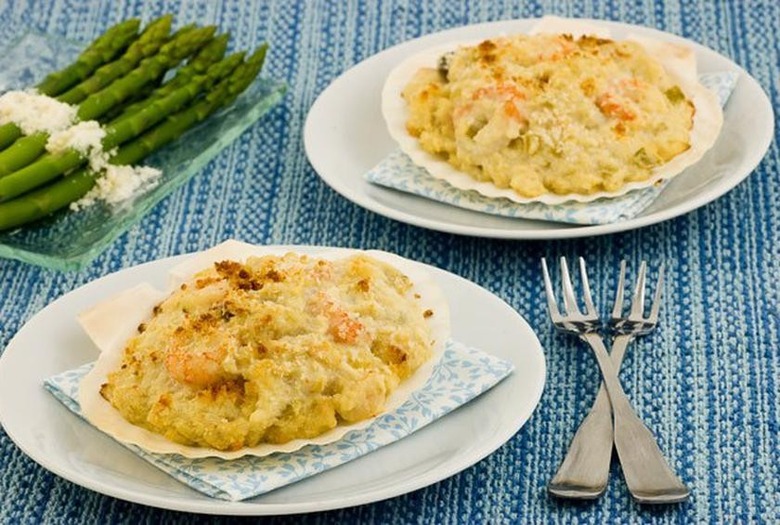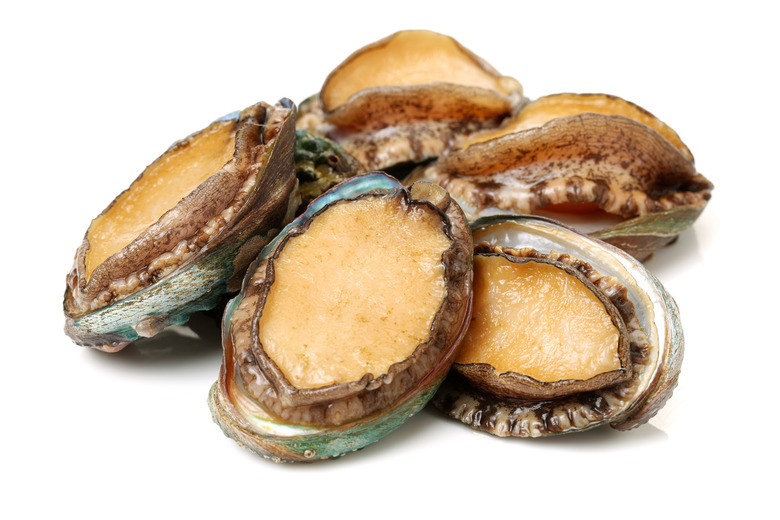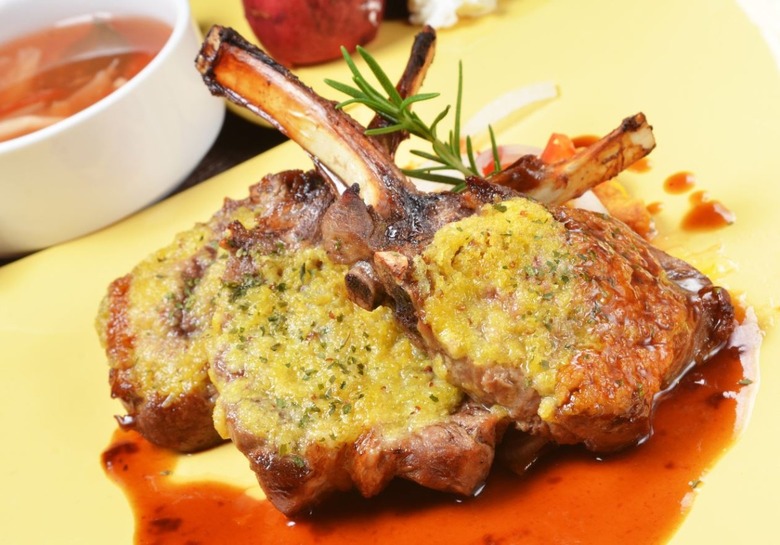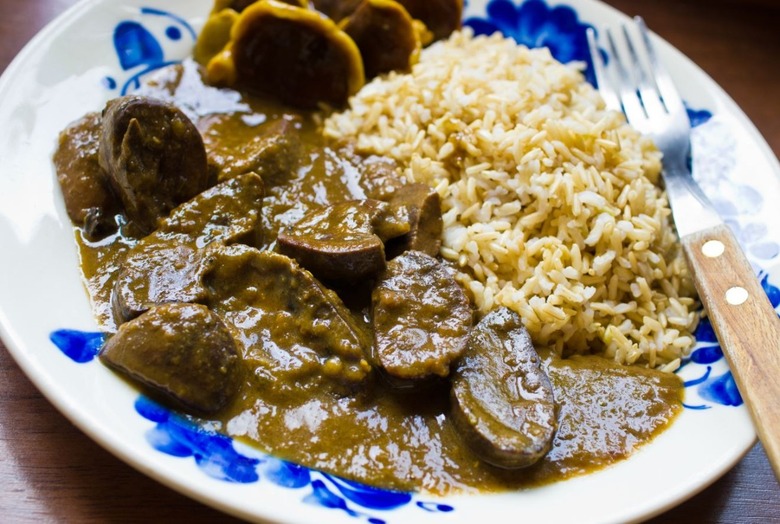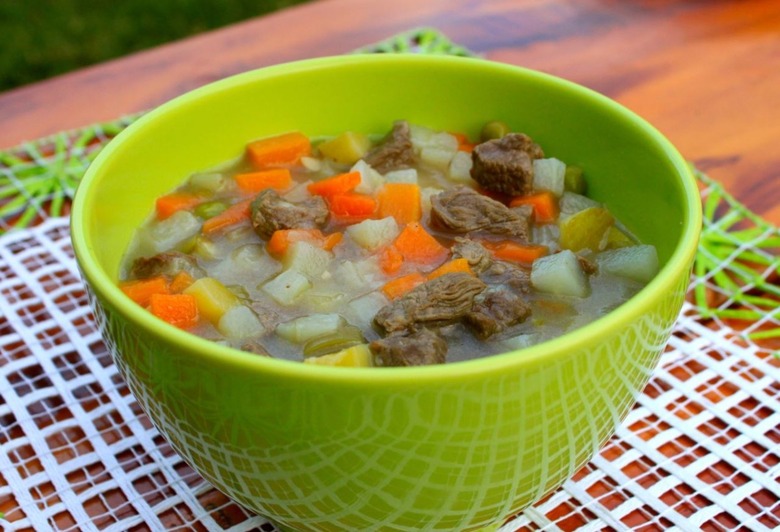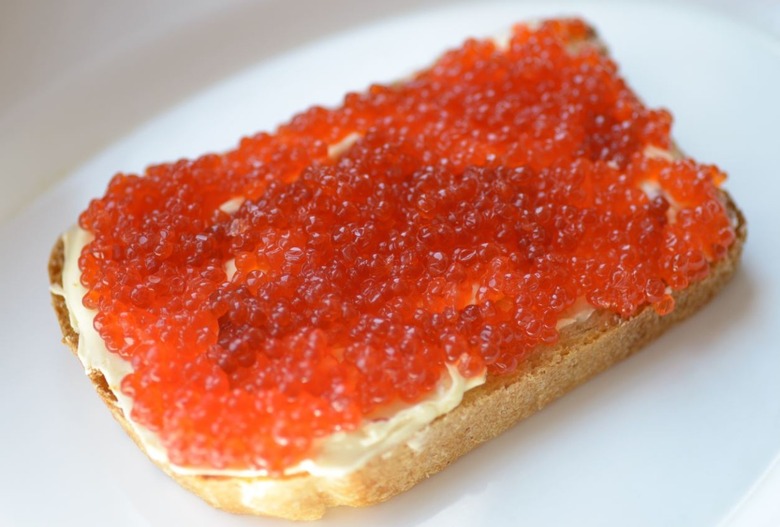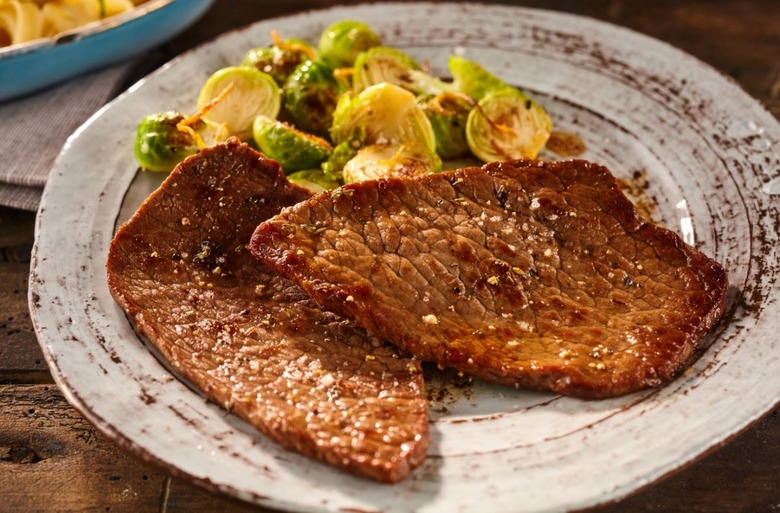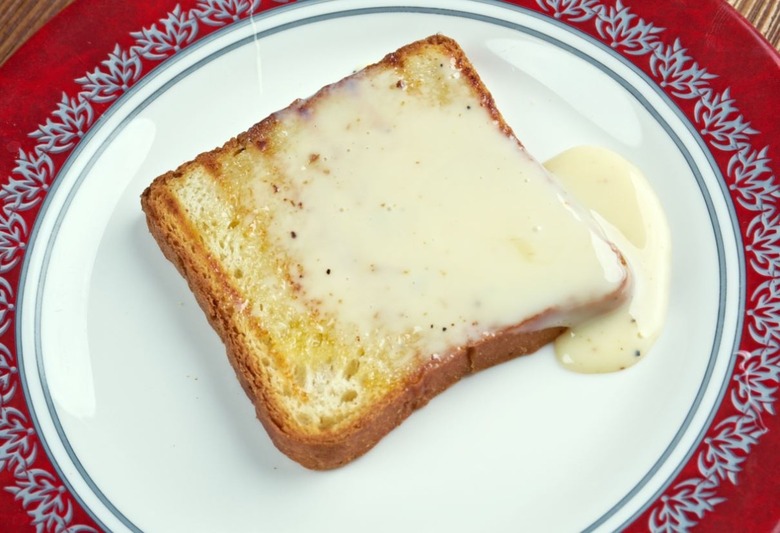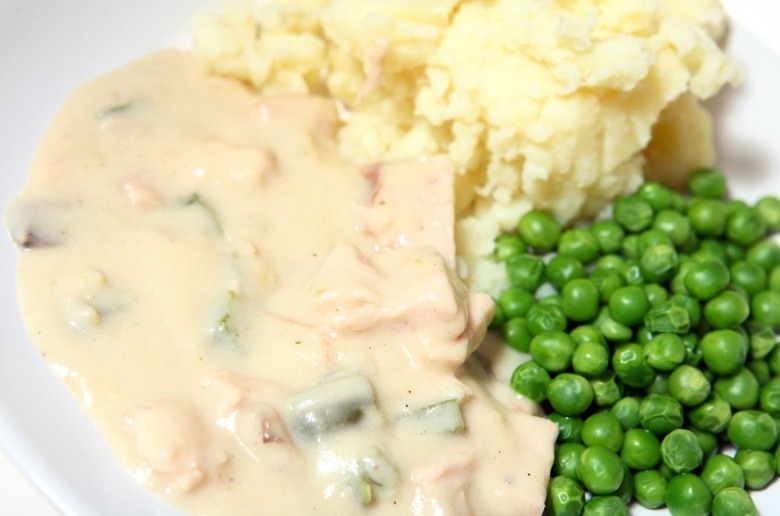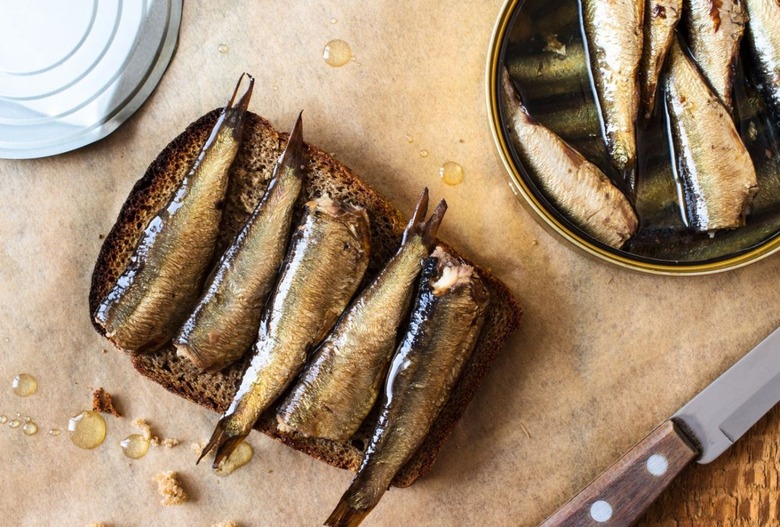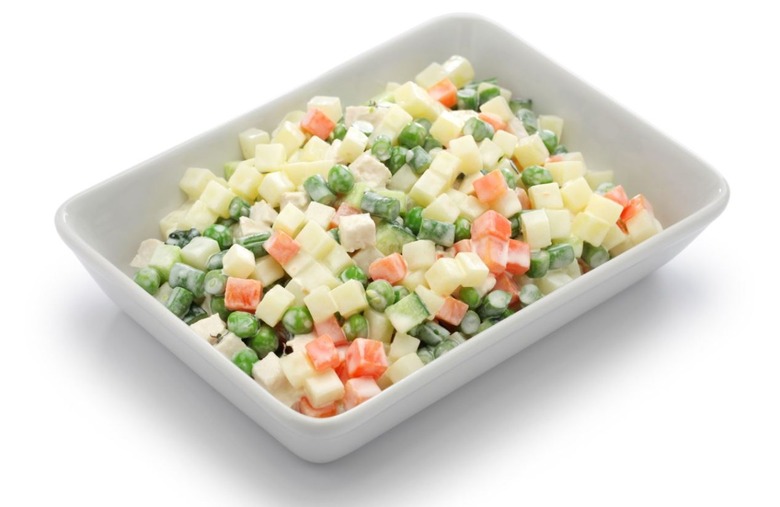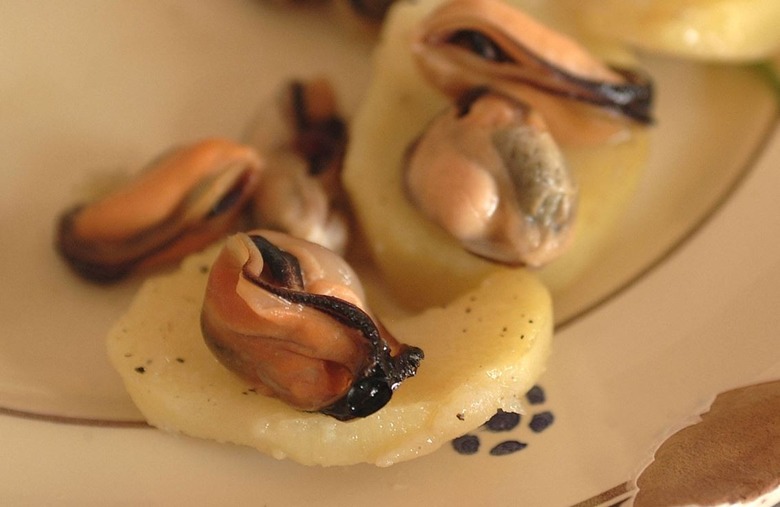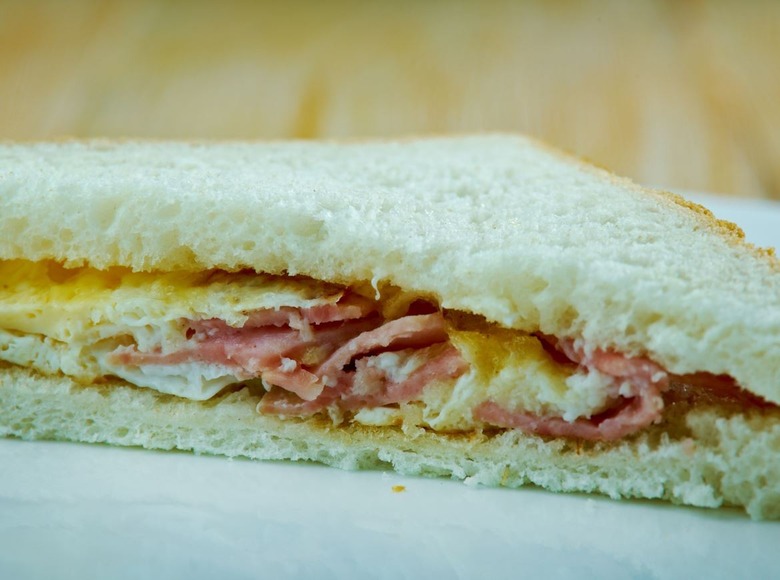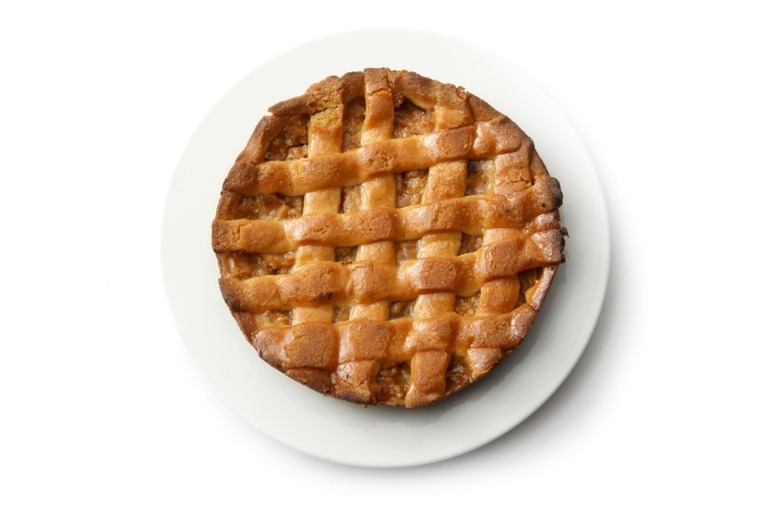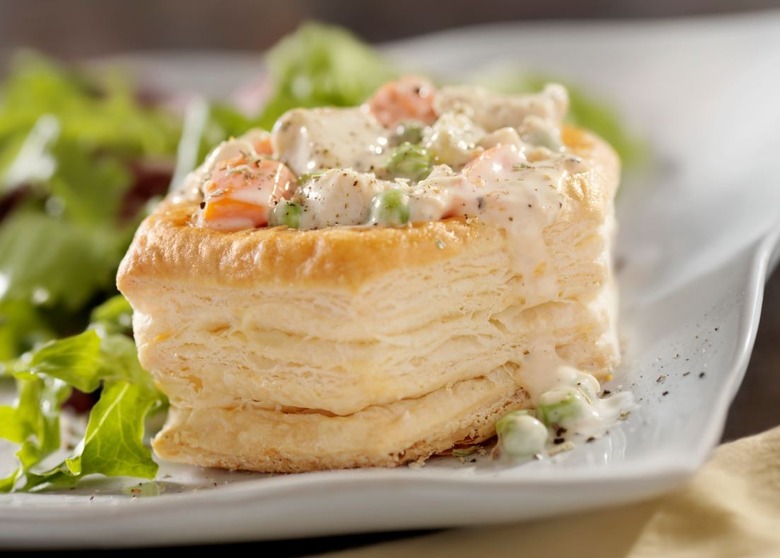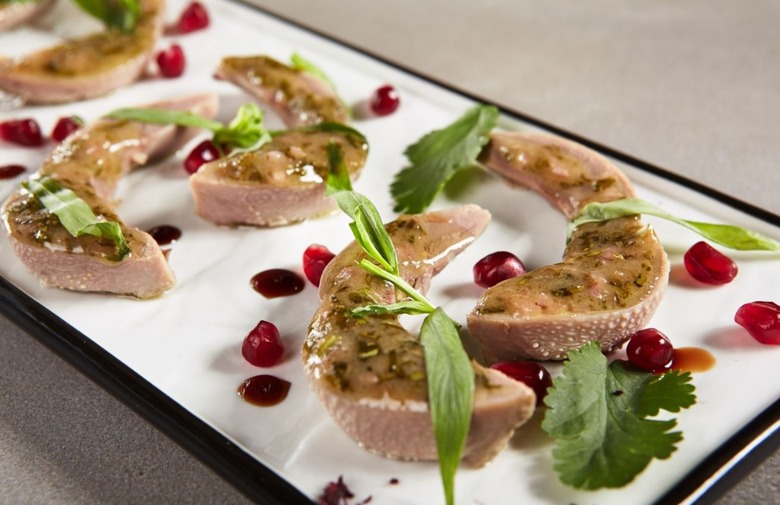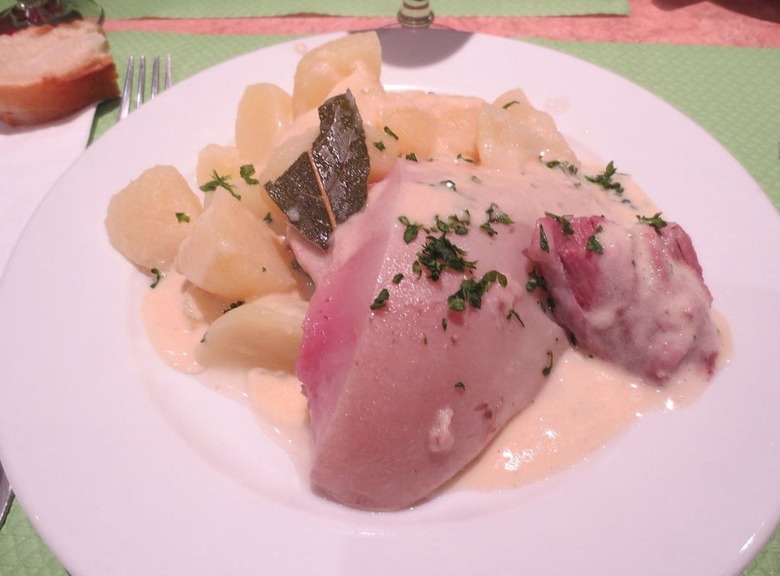25 Formerly Popular Dishes Restaurants No Longer Serve Gallery
If you were to travel back in time 100 years and visit a restaurant, be it a high-end French gastronomic temple or a no-frills lunch counter, a glance at the menu would most likely send your head spinning. Menus are ever-evolving creatures, and even in the past 50 years certain dishes that were once quite popular have gone the way of the dodo.
Popular tastes change over time, and these dishes have fallen out of favor for a wide variety of reasons. Some are very heavy, and tend to rely on complicated French techniques; some have vanished because they rely on animals (or organs) that the masses have simply stopped eating for a wide variety of reasons; and some, well, just aren't very popular any more.
From humble workingman's fare to outrageously ostentatious entrees, read on for a glimpse at some food items that, for better or worse, have all but disappeared from American menus.
Veal Cordon Bleu
This dish originated in Switzerland, and is a riff on traditional schnitzel. But instead of just frying the pounded veal cutlet, it's stuffed with ham and an easily meltable cheese (generally Swiss or Gruyère), rolled up into a roulade, and then deep-fried. This was another staple of fine dining restaurants from the 1950s right into the 1990s, but in recent years the heavy dish, like the similar chicken Kiev (which is stuffed with garlic butter) and its counterpart chicken cordon bleu, has fallen well out of fashion.
Sole Véronique
This dish was invented by one of the greatest chefs who ever lived, Auguste Escoffier, during a visit to London, and he named it in honor of the opening of a French opera there. Its name? Véronique. It's a fairly simple preparation of Dover sole poached in white wine and topped with a sauce of heavy cream, fresh herbs, and grapes. And while grapes and fish might not make for an obvious pairing, audiences around the globe went crazy for it, and it became a French restaurant mainstay. Today the dish has all but vanished.
Consommé Madrilène
If there's a trend to this list, it's the fact that most of these vanished dishes are rather difficult to prepare. Such is the case with consommé madrilène, a traditional French clear soup with tomatoes as the star ingredient. Consommé, which is a rich broth that's crystal clear thanks to the laborious process of constantly skimming the top while it's cooking, is traditionally served cold and is another vanishing dish. But this particular preparation, another staple of haute French cuisine, is rarer still.
Coquille St. Jacques
There was a time when Coquilles St. Jacques — another rich French dish of scallops sautéed in butter, topped with Gruyère and breadcrumbs, and then broiled — was so popular that even Julia Child published a recipe for it. Yet another French restaurant mainstay, it's a dish that's simply not served in all but the stuffiest of old-school French restaurants these days.
Abalone Meunière
This dish was always considered a delicacy, another West Coast specialty that had a brief, booming heyday and has since vanished into obscurity. Meunière sauce, similar to the already-mentioned amandine sauce, is a simple mixture of butter, parsley, and lemon juice, and in this preparation, abalone (a type of edible sea snail) is pounded thin, sautéed in butter, sliced, and served topped with the sauce. The dish was incredibly popular in the mid-20th century; so popular, in fact, that some restaurants substituted large calamari for abalone and diners were none the wiser. The poor shellfish was nearly driven to extinction, and finally restaurants stopped serving it. The dish has experienced a slight resurgence thanks to some thriving abalone farms, but due to the fact that table-ready farmed abalone takes many years to reach the preferred size of about 7 inches, odds are it will never experience the kind of nationwide popularity of its heyday.
Mutton Chops
Lamb has long been a fine-dining menu staple, but it was once joined by mutton, or fully-grown sheep. Mutton has a much stronger flavor than lamb, and as tastes have changed mutton has gone virtually extinct from restaurant menus. Even at New York's famed Keens Steakhouse, where a mutton chop has been one of the most popular dishes for over 100 years, today it's made with lamb.
Stewed Kidneys
Lamb or beef kidneys weren't uncommon on fancy menus in the late 1800s and early 1900s; usually they'd be simply cooked with stock, garlic, and herbs and served on toast.
Petite Marmite
Petite marmite, which translates to "little cooking pot" in French, was another semi-common dish around the turn of the 20th century. It's basically a clear beef and vegetable soup, made in an earthenware pot and usually served with shredded cabbage and marrow bones.
Terrapin
Turtle was once far more popular a menu item than it currently is; whereas nowadays it only appears in soup at a handful of restaurants, 100 years ago terrapin (usually from Maryland) was actually pretty common on fancy menus, in a variety of preparations: Newburg, stewed, in several types of soup, a l'Indiana (not quite sure what that means), and even roasted fin. These dishes died out as terrapins became rarer and more expensive.
Snipe, Plover, Woodcock, and Other Small Birds
It seems as if no fine-dining feast of the late 1800s was complete without a variety of small roasted game birds being served. English snipe, woodcock, plover, ortolan, partridge, and other small birds were common, and some were even small enough to be eaten whole. Several different varieties of ducks were also common high-end restaurant offerings, including teal, mallard, canvasback, ruddy, and red-head. Today, the only small birds still found on menus are generally quail and squab.
Caviar Sandwiches
Believe it or not, caviar was once up there with ham, roast beef, and corned beef as a sandwich filling, and it was just as inexpensive. We're obviously not talking about beluga caviar here, as the sandwich was most commonly found on menus at lunch counters and bars, simply served on toast. Today, New York's Grand Central Oyster Bar is one of the few remaining restaurants that serve it, and it costs less than 15 bucks.
Minute Steak
Minute steak — a steak sliced or pounded so thinly that they cook up in a minute — can still be found at supermarkets, but it was once also a common item on less-expensive menus, especially around the middle of the 20th century, usually served with herbed butter.
Milk Toast
If you dropped by a breakfast-centric restaurant, like Child's in New York City, 100 years ago, you would have found a curious item alongside the griddle cakes, French toast, and corn muffins: milk toast. It's basically a slice of toast that's topped with a sweet, roux-thickened, milk-based sauce. It's pleasingly innocuous and inoffensive, explaining why people who match that description are commonly described as "milquetoast."
Chicken a la King
Chicken a la King's origins are unclear — it was most likely created in the late 1880s or early 1890s in either London, Philadelphia, or New York — but it remained an incredibly popular dish right up to the late 20th century. It's a relatively simple dish of chicken, mushrooms and vegetables in a sherry-kicked cream sauce, served over pasta or toast. Today, the heavy, creamy dish is all but extinct from restaurant menus.
Oyster Pan Roast
A "pan roast" of oysters (or less commonly, clams) was a fairly common menu item in the first few decades of the 20th century, as just about every restaurant on the East Coast, regardless of price, served oysters of some sort. This preparation is pretty archaic, and only a handful of restaurants still serve it, including New Orleans' Palace Café and New York's Grand Central Oyster Bar. It's made of oysters simmered and served in a savory cream-based mixture.
Sardine Sandwiches
Just like caviar sandwiches, canned sardine sandwiches were once commonly found on lunch counter menus, especially in the first few decades of the 20th century. You won't encounter too many sardine sandwiches these days, but if you've never had a sardine before, try it – they're good!
Macédoine
Macédoine, sometimes called Macedonia, is essentially a salad made up of diced fruits or vegetables. (It got its name from the mixture of people in Alexander the Great's Macedonian Empire.) The dish once appeared as both an appetizer and a dessert on fancy menus; as an appetizer it contained vegetables, and as a dessert is contained fruit. Over the years, it's transformed into something we see a little more commonly today: fruit salad.
Salade Francillon
Here's a dish we bet you haven't heard of, even though it was once found on many fine dining menus, especially in the late 1800s. Salade Francillon is a cold salad composed of sliced boiled potatoes and mussels tossed in a vinaigrette and topped with herbs and sliced truffles. Fancy!
Denver Sandwich
It wasn't uncommon to encounter a Denver sandwich on casual lunch menus in the mid-20th century. But what is it, exactly? If you know what a Denver omelette is, you're almost there: an omelette made with chopped onion, bell pepper, and occasionally ham, between two slices of bread.
Turkey Tetrazzini
Another mid-century classic, Turkey Tetrazzini is perhaps best known today as an easy-to-cook casserole of diced turkey, spaghetti, mushrooms, grated cheese, and cream sauce that was a postwar staple. It was actually invented around 1910, however, at either the Palace Hotel in San Francisco or the Knickerbocker Hotel in New York, and while the original recipe wasn't a casserole, it didn't differ too much from its '50s counterpart. It enjoyed a heyday on a wide variety of restaurant menus in the '20s and '30s, but today has all but vanished (at restaurants, at least; plenty of people still make it at home, especially with Thanksgiving leftovers).
Mock Apple Pie
Remember mock apple pie? The recipe was printed on the back of Ritz Crackers boxes for decades starting during the Great Depression, when fresh apples were hard to come by. It's made by replacing apples with Ritz crackers, and believe it or not, the final product actually tastes a lot like apple pie. It became a popular restaurant dessert at around the same time it become popular to cook at home, and remained fairly common for decades thereafter, but you'd be hard-pressed to find it on a restaurant menu nowadays.
Chicken Vol-au-Vent
A vol-au-vent is a hollow, filled puff pastry, popularized by legendary French chef Marie-Antoine Carême in the early 1800s. By the end of the century, many fine restaurants in the U.S. were serving the dish in varying sizes, from nearly a foot across for large groups to small individual portions. They were traditionally filled with a creamy chicken mixture. Today you may still see mini vol-au-vents at cocktail parties, but rarely (if ever) on restaurant menus.
Cold Boned Capon in Jelly
A capon is larger and more flavorful than a traditional chicken (capons are male chickens that are castrated at a young age and fed a milk-based diet), and they used to be much more common on menus than they are today. One popular preparation in the early 1900s was to debone it, encase it in a savory jelly, and slice it to order, similar to a modern-day terrine.
Pickled Lamb's Tongue
You don't see tongue on restaurant menus anymore, unless you're at a Jewish deli or a taqueria, but up until four or five decades ago it was incredibly common, especially on a sandwich. Tongue experienced a bit of a heyday in the early 1900s, when you'd find it on sandwiches as well as the main course, occasionally smoked, occasionally pickled, occasionally beef, occasionally lamb.
Tête de Veau
Calf's heads, removed of all fat, skin, and fur before being rolled, tied, poached for 5 or so hours, and sliced, was once a staple of French fine dining restaurants, but now has all but vanished from American restaurants (even though it can still be found in some parts of Europe). The dish, which is incredibly laborious and time-consuming to produce, is usually served topped with a vinaigrette or sauce ravigote. And while you may have found it on fancy menus back in the day, it's one of many, many recipes that nobody in America makes any more.
More From The Daily Meal:
The 101 Most Iconic Restaurant Dishes in America
Dishes You'll Only Find in the Midwest
What Food a Dollar Could Buy the Year You Were Born
If You Grew Up in the '50s, You'll Definitely Remember These Foods
